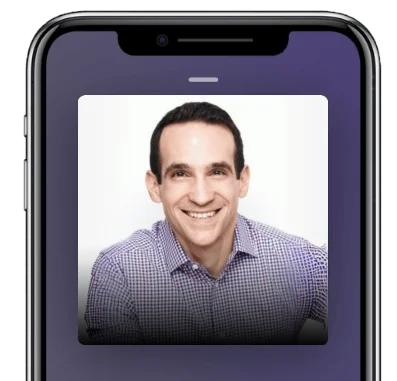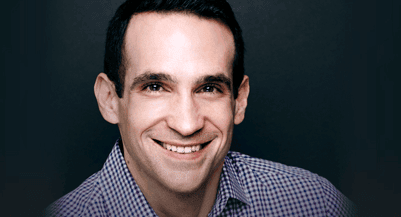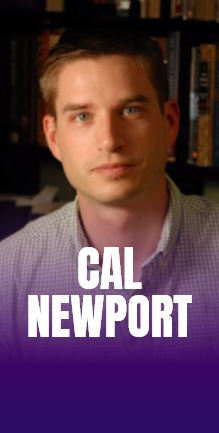Nir, it’s so great to have you on the show.
My pleasure. Thanks for having me.
Let’s talk about getting people hooked and also how we can avoid people hooking us when we need to get deep work done. Because you’ve had two sides of the same coin—you’ve written books on both sides of it which is fascinating to me. Getting people hooked and helping people to not be distracted by their devices or the different apps they’re using and actually getting meaningful work done. Tell us more about that. Why do you have a book on each topic?
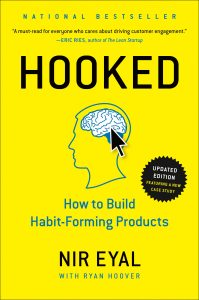
Hooked, it is a provocative title. But the idea is really about how do we build products that produce healthy habits in our customers and our users. That was a very business facing book. To help people build the kind of products that people want to use as opposed to have to use. The idea here is, what if we could use the same psychology that makes video games, Facebook, Instagram, WhatsApp, and all of these products so engaging? What if we could use that very same psychology to help people form healthy habits? To exercise, eat right, be more productive at work, to stay in touch with family. What if we could use that same technology and psychology to help people live better lives. That was the idea behind Hooked.
More recently, my next book, Indistractable, which is about how to control your attention and choose your life is really about what do we do if we have some bad habits? What do we do if we find ourselves getting distracted by our various habits, whether those habits are tech-related or not? That’s the goal of that book. I’m trying to answer this key question that has fascinated me and has fascinated philosophers for a very long time, starting with the time of Aristotle and Socrates around this idea of, “Why don’t we do what we say we are going to do?” That’s really what Indistractable is about.
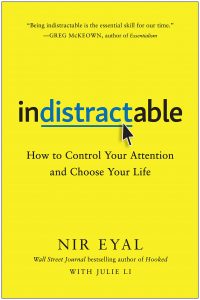
It’s about why do we get distracted? If we know we’re supposed to eat healthily, why don’t we? If we know we are supposed to exercise, why don’t we? If we know we are supposed to sit down on our desk and do our work, why do we find ourselves on Slack channels or sending emails when we know we want to do something else. That’s really the goal of that book.
What’s the answer? Why do we do this?
It’s interesting. I’ll tell you what is ‘not’ the answer, and ‘I thought’ the answer. I wrote Hooked then shortly after I wrote Hooked, I found myself overusing some of these products. Some of the case studies in my book, the usual suspects of Facebook, YouTube, Twitter, Instagram, and all these things or just good old work email. That’s probably my worst habit was over checking my email account constantly. Probably the mother of habit-forming technology.
I found that this has some pretty bad consequences. It took a toll on my family. It took a toll on my work output and productivity and on my general happiness. I wanted to get down to what really causes distraction, so I read every book on the topic. They basically said the same thing. I bought every book I could possibly find on distraction, focus, and etc.
They all basically said that technology is the problem. If the cause of technology addiction is technology, that is totally not true. Because what I found when I got rid of technology, and I did the digital detox, I got a Word processor without an internet connection from 1995, and I got a flip phone and put away my smartphone, it didn’t work. This is what happened to me, I used to be clinically obese at one point and I would go on these fad diets and I would say, “Okay. I’m not having any more fast food for the next 30 days.” Of course, guess what happened on day 31? I ate like crazy to make up for it.
The killer insight I realized writing this book is that distraction starts from within. Whether that distraction is our phones, emails, too much television, workaholism, whatever it is that we overdo when we are compelled to do something that is against our better interest, the source is from within. It has to do with what’s called Internal Trigger that fundamentally, all distraction is a desire to escape discomfort.
One of the chapters in the book is called Time Management is Pain Management. The book really starts with this icky sticky truth that none of us really want to face, that these problems with distractions and our real problem with productivity is not that we don’t know what to do, we all know what to do. Come on, it’s common sense. Do the work, right?
Why don’t we do it? We don’t do it because distraction gets in our way. That’s the first step, is to realize that distraction starts from within and then it gets easier from there. That’s the hard part. The easy part of these three other steps which we could talk about as well, about making time for traction, hacking back external triggers, and then preventing distractions with pacts. We can talk about how to do all that too.
Let’s do that because you segued so beautifully.
Sure. The hard part is dealing with these internal triggers. How do we deal with internal triggers? By the way, we should back up a second. It used to be that we believed that human motivation was spurred by the pursuit of pleasure and the escape from pain. It turns out, this is called Freud’s Pleasure Principle, it turns out that’s not true. In fact, all human behavior originates from the desire to escape discomfort. All human behavior is a desire to escape discomforts, it’s called the homeostatic response.
We cannot control outputs. We can only control inputs. The only thing that you have control over in terms of input is your time. Share on XWhen we’re cold, that’s not comfortable, we put on a coat. When we go indoors and we have that heavy coat on, and it’s hot, we take it off because being hot is uncomfortable. If we are hungry, we feel hunger pangs, we eat. When we are stuffed, that doesn’t feel good, we stop eating. Those are physiological sensations. The same applies to psychological sensations so when we are lonely, we check Facebook. When we are uncertain, we Google. When we are bored, we check YouTube, stock prices, sports scores, or whatever. All behavior is prompted by the desire to escape discomfort.
After we have figured out these internal triggers in our life, we have two solutions to respond to them appropriately. Solution number one is to deal with the problem, to actually face whatever it is that’s causing this internal turmoil that we can try and fix. Many times, what I discovered in my research is that it is not the technology per se, it’s what we’re running away from through the technology.
For example, if you have a workplace culture that is oppressive. There are two psychological conditions in the workplace that had been shown to literally cause depression and you almost never see an academic study that goes beyond correlation. This one that I included in the book actually talks about a causal relationship with work environments where there is high expectations and low control. That is a kind of place that causes these internal triggers that we seek to escape from. The first solution is to deal with the source of the problem. Deal with the source of the internal triggers.
But sometimes there are problems in life we just can’t escape, that we have to deal with in a healthier manner. That’s the second solution. The second solution is to learn healthier ways to cope with our discomfort. I talk about a broad range of techniques and tactics that we can use to cope with distractions, to cope with these internal triggers in a healthier way. That’s internal triggers. That’s the first step.
The second step is to make time for traction. I talked about how if you think about a continuum, to the right we have traction. Traction are actions that we take that move us towards what we want. Things that we do with intention. The opposite of traction, doing the things you want to do is distraction, doing the things you don’t want to do, things that you didn’t intend. We have traction and distraction. What’s the key to getting more traction in our lives? To do that, we have to make time for traction.
Turns out that two-thirds of people out there don’t keep a calendar. The problem is, of course, if you don’t keep a schedule, if you don’t plan your day, someone else will. It frustrates me to no end that I hear people complaining about how distracting the world is. Then I ask them, “Can I see your calendar? Can I see what it was you plan to do today?” And it’s blank. They don’t have anything on their schedule. The rule is you can’t call something a distraction unless you know what it distracted you from. We have to find our day or someone else will.
That’s the second step. I talk about in the book how to coordinate with stakeholders in our life like our family, spouse, workplace colleague, boss, and people in our team. It’s really about syncing our calendars together and I’ll tell you how to do that.
The third step is to hack back external triggers. External triggers are things in our environment that prompt us to action, the pangs, the dings, the rings. But they can also be people. An open floor plan office where people just stop by your desk and say, “Hey, can we just talk for a second?” That is a distraction if it takes you off track.
Yes. Got a minute meeting. Those are productivity killers.
Exactly. It takes us a long time to get back on task and they are horrible. Not that there’s anything wrong with chatting with a colleague, but again on your schedule, not when someone just decides to pop on by. I talk about strategies on how to cope up with that. How to hack back the technology that has been designed to hack our attention. We are not powerless. We can actually hack back these technologies. We can remove the external triggers in our life that don’t serve us.
Finally, I talk about the fourth step which is to prevent distractions with pacts. This is all about using what’s called a pre-commitment and we can use technology to block out technology. We can use tech to enter into these pacts, these pre-commitments to make sure that we retain our ability to focus, to keep ourselves in the task that we want to do. That’s it. It’s master internal triggers, make time for traction, hack back external triggers, and prevent distractions with pacts. That’s the secret to becoming indistractable and there’s a lot more to that, but I’m getting the 30,000-foot overview.
That’s great. I would love to hear some examples that are pertinent to your life and your business where you’ve made these pre-commitments and pacts and how’s that affected your productivity and fulfillment.
Absolutely. Even better, you want to be the guinea pig here?
Sure.
Are there any distractions in your life that take you off track?
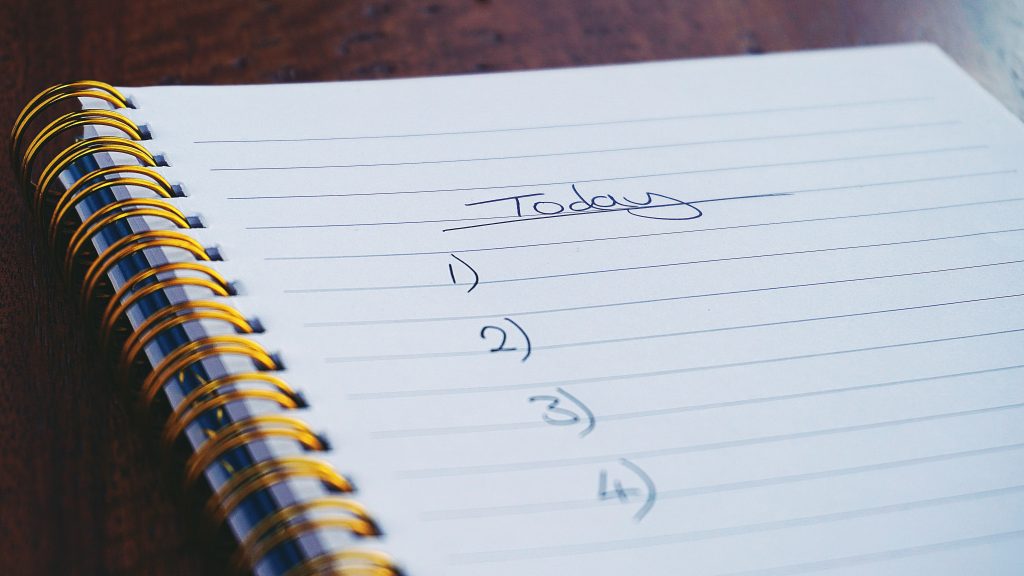
Facebook. I actually deleted Facebook from my phone. I tried to remove the external trigger, but then I find myself going on to the Safari app on my iPhone and going to Facebook that way especially if I have nothing else to do. I don’t feel like I’m productive on my iPhone. I’m a hundred times, a thousand times, more productive on my laptop than my iPhone.
That is totally true. I’ll give you 10 reasons. The 10 reasons are the fingers on your hands. You were just so much quicker at typing on a computer than thumbing it around on your phone. Part of the solution, I think you’ve identified, once you remove the external trigger. Two, you identify the internal trigger of this need, of the fear that you are not being productive. Then three, hopefully, you schedule time in your day—I don’t know if you’ve done that—but if you schedule time in your day to get to Facebook. Have you done that by the way? Have you scheduled a time for Facebook?
No, I haven’t.
This will help you a ton, I believe. Because what happens is there’s that internal trigger, maybe not even being perceptible to you that you fear, “Hey, if I don’t check Facebook, I might miss something.” Well, if you schedule time in your day for Facebook, there’s nothing to worry about.
In my calendar, every night from [6:30] to [8:30], that’s my social media time. It used to be the time I watch TV, now I don’t watch that much TV. I think it’s more productive to connect with friends. To learn interesting content, to connect with others, to stay in touch with my readers. I love social media. There’s nothing wrong about it. It doesn’t melt your brain. It’s not bad for you. It’s bad for you because it comes at the cost of what else you could be doing. If you find that it distracts you while you do work, while you want to reflect, while you want to pray or meditate, or be with your kids, then it’s a problem. But if you make time for it, what you’ve done, is you take something that was a distraction and you literally turn it into traction because that is exactly what you intend to do. That might be a step you want to consider is actually making time on your calendar for Facebook or whatever other social media product you find might be distracting you today.
That’s great. One thing I find is, you said earlier about if you don’t plan your day someone else will, and it’s so spot on. One example of that is I have Acuity as my scheduling app. I used to use Schedule Once, but I moved to Acuity. People can book time, clients, prospects, podcast guests, etc. I do have some rules in the software that I’ve set up or my team has set up for me. Like, “You can’t book time on Fridays. Fridays are my deep workday. Podcast guests can only book Tuesdays or Thursdays.” I forgot which days of the week each of these different things are constraint to but clients don’t get full reign of my calendar. But it’s greater than the podcast guests, etc.
With all these rules set up, but I don’t feel like I’m in control of my calendar. I end up just seeing it, “Oh, I got four calls today. Two of them are podcast interviews and one is a client call and one is a prospect.” That just gets me out of any potential for deep work and keeps me in the shallows for the whole day that I’m not doing those calls. I fill it in with an hour of shallow work. Does this resonate with you? Do you have the same problem?
You schedule a time when you want to take your call, but you find that on the days when you don’t schedule those calls, you tend to do more shallow work?
Well, four days out of five of the workweeks are the days where people can book calls. Whether it’s a podcast guest, or it’s a podcast host who wants to interview me, or a client, or a prospect. Across those different categories, they’ll have access to various days, Monday through Thursday. Friday is mine to do deep work. It used to be any day of the week you can book time with me depending on which category you were in.
Here’s my problem, four out of the five days, Monday through Thursday, I don’t feel like I have control over my calendar really because guests can come up and book time, or clients, or prospects. Consequently, I end up filling the gaps between these calls with shallow work instead of deep work.
A question for you, why is the whole day available as opposed to just time chunking it to let’s say, “Look, I only do interviews from this time to that time.”
It’s not all available. It’s let’s say the mornings are for podcast guests or the afternoon for clients, whatever. But I do give more priority to my clients than I do to my podcast guests for obvious reasons.
Right. One thing you may want to consider is to reevaluate this template. A technique I advocate is time boxing where basically, what we have is a template for the week set for every week. What we do is we sit down, and we consult our values. That starts with these three domains of time for yourself, time for your relationships, and time for your work.
In each of these three domains, we ask ourselves how much time do I need to live up to our values? Values are defined as the traits of the person we want to become. We ask ourselves to exercise these values. How much time do I need for myself to listen to audiobooks, pray, meditate, workout, whatever it is that I do for myself? How much time do I need for my family, time to do household responsibilities, to be with my kids, my spouse, my friends, my community?
Then finally, that outer ring of how much time do I need at work, not only working but also specific tasks at work. How much time do I need for my podcast guest? How much time do I need for my clients? How much time do I need for email? Then we literally schedule out every minute of the day in advance. That’s a template. It doesn’t mean you are always going to execute perfectly for every minute, but it means that now for the first time, you’ll know the difference between traction and distraction.
Email is the bane of many offices. It's the mother of habit-forming technology. Nobody really likes it, but we are habituated to using it. Share on XTraction are the things you intend to do that you then did on your calendar. Distraction is anything that took you off track. If you have a client that says, “Hey, I really need to talk to you Monday morning.” They’re sending you this message on Thursday or Friday of the week before, then you could adjust the following week to accommodate that time and move your template for the week in advance. You still have time for other things in your life. The idea then is that you know in advance. It’s not a surprise then when you start your workday because you know in advance exactly when you are going to do various things you want to get done that day.
You can also be strategic about that. Obviously, you can close gaps in your schedule, you can fill them with activities. If you have an extra half an hour here, half an hour there, if it says on your calendar, “Do email for 30 minutes, 20 minutes, or 15 minutes, ” or whatever it is that you have a gap in your calendar that has been preassigned. You know what that time is going to be used for and you’re less likely to be tempted by distractions like, “Let me check Facebook. Let me just Google something. Let me just check ESPN.” Because there’s a very specific thing to do in that time slot.
This is supremely better than a to-do list. A to-do list is the three-card monte of productivity. To-do list are terrible. To-do list are terrible because they give us the perception of if we just write something down, it will magically happen. You and I both know that that’s not how it works. That our to-dos are pushed from one day to the next, to the next, to the next, unless there’s nothing wrong with a to-do list per se, but to-do list on their own without scheduling the time is a big fat productivity myth.
Everything that you need to do that takes more than 15 minutes needs to be on your schedule because we cannot control outputs, we can only control inputs. The only thing that you have control over in terms of an input is your time. You’ve got to put those tasks on your calendar or chances are they’re just not going to get done. Is that helpful at all?
Are you using Google Calendar, do you have a separate calendar for all the internal project, work, and blocking out these times to work on things like email, Facebook, writing your books, whatever…?
Absolutely.
… and then a separate calendar which is for appointments and then you readjust that week’s project calendar based on the interviews and client calls and so forth that you have to take.
One calendar. One for my entire life and every minute is booked. I know every morning—I’m looking at it right now—breakfast is from [7:15] AM-[8:00] AM. I work out from [8:00] AM-[9:00] AM. I do my writing from [9:00] AM-[9:30] AM. I make and eat lunch from [11:30] AM-[12:30] PM. Then it depends on what day of the week, I have one day of the week I call Message Mondays and Message Mondays from [11:30] AM-[5:30] PM are just nothing but cleaning my inbox of the week.
I can tell you this technique reduced my time spent on email by about 90%. One day we are going to do nothing but emails. One day a week, I’m with my daughter. We go out in the afternoon. I spend that time with her, then in between, that’s where I have my various appointments, consulting engagements, etc.
For me, mornings are my sacred writing time. Something really out of the ordinary and very urgent has to happen to interrupt that morning time I’ve set aside just for that. But then I have big blocks of time that are blocked for interviews for whatever can fill in as time arises. I intentionally don’t schedule any of those things in times when I know I’ve reserved them for focus work.
Okay, I see now. Message Mondays, you’re going to work on your emails but not in the morning. You are going to be writing for let’s say HBR, for your next book, whatever in the mornings because that’s your prime on-time or flowtime, then you’ll do the email stuff quite in the afternoon, I’m guessing.
Right. One day a week, my Message Monday is just the afternoon. I have from [12:30] PM-[5:30] PM, I crank through my email. Let me tell you a bit about my email system. I did a lot of research on email productivity systems and a lot of people have trouble with email. Email is the bane of many office workers’ existence. It’s a mother of habit-forming technology. Nobody really likes it, but we are habituated to using it. I discovered that the big problem with email, where the time goes in terms of wasted time spent on email, is that it’s not the responding necessarily that is wasted time, it’s the checking and rechecking. That’s the problem.
In Hooked, I talk about variable rewards. These slot machine-like mechanics that keeps us checking and checking Facebook, email, Slack, etc. The idea here is to remove the variable reward as quickly as possible from the equation. The variable reward is, “When should I respond to this email? ” That’s the most important information in any email you receive is when does this need a reply from a time management perspective, we’re talking here.
The idea here is that you are only touching each email twice. As soon as I receive an email, I have a choice. I can either archive it if it doesn’t need a response at all. I can either label it with “Tonight.” I do a daily email check every night where I respond to emails or “This week.” Those are the three things I can do with an email. I can either label it tonight, this week, or archive. So that at the end of every day, my inbox is color-coded with two different colors. Things that can wait till Message Monday which is when I flush through all the things that can wait till the end of the week or things that are urgent that I need to respond to today before the end of the day.
I’m not staring at a massive inbox having to recheck every single email, “When does this need a response? ” All I’m looking for are those red-tagged emails that needs a response tonight. For that, I have time in my schedule booked for about an hour every night when I just crank through all the emails that are actually urgent. I don’t touch any of the emails that can wait till the end of the week.

I do this for two reasons: one, it allows me to prioritize the most important stuff and let the other stuff wait so I’m not constantly checking and rechecking. The other thing it does for me is that it gives a little time for people to solve their own problems. What we find is when we constantly play this email ping pong game, back and forth, we forget that if you want to get fewer emails, you have to send fewer emails. It behooves you not to respond to emails that can wait.
That’s exactly what I do. I wait for sometimes a whole week before I respond to many emails because they don’t need an immediate response. Nothing bad will happen if they are responded to on a Monday versus on a Tuesday the week before. They can wait a little while. Many times, the more times than you expect, I get emails back that says, “Oh, no. It’s all good. We figured this out.” Or, “Thanks, we’re good.” Or, it didn’t need an urgent reply. That saves me time from this Ping-Pong game that many people and I used to play.
Do you also use an assistant to help you manage your email inbox or is it all you?
Nope, just me.
Okay. My approach is very different from yours but it does work for me. I have an assistant, actually, multiple assistants who have access to my email and do stuff like file things in the archives or put it in the action folder if it’s required for me to respond to. If it’s just an FYI, then it goes in the Read Review folder, gets labeled with—I’m a Mac fanboy so I’m using Apple Mail, the mail.app program and it’s based on folders instead of labels. But then Google Mail is what I’m using on the backend. It is labeled but then it shows up as folders for me on my application.
I don’t have to go into the inbox. I just go in the Action folder and deal with that stuff. I occasionally will go on to Read Review folder, but that’s only for FYIs, there’s nothing in there. There shouldn’t be anything in there that’s like a burning fire. Just FYI that’s it. If it requires a reply or an action on my end, then it goes to Action. Otherwise, I don’t need to really pay attention to anything else in my email. That works for me, but then my assistant gets overwhelmed a bit.
Email’s one of those things that are tricky to talk about because it is so idiosyncratic. Everybody has a different technique. Now, I’m not talking to anybody who has an email system that works for them. I talk for, I think in the book it’s four pages about email, and it’s a very skippable chapter. If your email is working for you, don’t read that chapter. But for people who are struggling with email, this is my offer to help them sort this out by looking at what’s really important about email which is when does it require a response. That’s where we tend to waste more time, most of the time. But if you don’t feel like you’re wasting time on email, don’t worry about that part.
But for many of our listeners, I’m sure they feel a little bit overwhelmed by email especially on who keeps stuff in their inbox and doesn’t practice Inbox Zero. I do.
Me too.
That can be really stressful. It’s this kind of cloud hanging over you, knowing that you have 10,000 unread emails. I can’t even imagine living like that, but people do.
I hear you. But in some ways, the problem with Inbox Zero is that itself can be stressful. What we find with a lot of people who are part of the Inbox Zero Club, they are checking for the sake of checking because they got to get back down to zero. For some emails, it is a good idea to clear that inbox for every single day. For example, things that deserve a reply today should be inbox zero, but things that can wait a while should not be done with. It’s a waste of your time to deal with those emails that don’t need a reply right now.
What people who are religiously Inbox Zero don’t realize that the more they keep replying urgently at all hours of the day and night, the more they are going to get emails back. It can be very counterproductive to just lead by the mantra of Inbox Zero. You only want to be Inbox Zero for the emails that deserve a reply right away.
If you don't keep a schedule, if you don't plan your day, someone else will. Share on XThat makes sense. My team does the Inbox Zero thing for me, so I don’t feel too tempted to go digging around the inbox if something hasn’t been filed to the action folder yet. The checking and rechecking and that being the source of most of the waste of time, I totally relate to that. Because if I do start looking at the inbox before it’s gotten filed into Action, Read, Review, and Archives, then I get sucked in, waste a lot of time and rereview emails multiple times. I really like this idea of labeling with “Tonight” or “This week” because my action folder has a lot of emails in there that it’s a little overwhelming now. If I can distinguish from that which ones are more urgent and which ones can wait, then I don’t do as much of the rechecking and reading of these emails. Very cool.
What do you think about email bankruptcy? I’ve got 10,000 unread emails, I’m just going to send a blank email to everybody and say, “I’m declaring email bankruptcy. If you had something really important that was sitting on my inbox, you better resend it cause, otherwise, I’m not going to see it.”
That’s a technique. It’s a nuclear option. I think that there are probably smarter ways to do it. Filtering out with just a few seconds, you can filter out spam, commercial messages. Gmail comes with a lot of functionality that lets you sort stuff away very quickly. One technique that I don’t think is discussed enough is this idea of just taking small chunks. For example, when I was writing Indistractable, I had a ton of research that I read through. Every time I come across something I liked; I would send it to myself in email. At one point, I had 900 articles that I needed to sort through for the book.
That’s a gargantuan task because it’s just not reading each of these emails. It’s actually clicking on the link, opening the article, trying to remember what was it that I liked about that article, taking out that snippets that I thought might be good to add to the book, and then saving it into Evernote so that I can access it later. It took a lot of time. I keep delaying, delaying, and delaying. Again, the source of procrastination is, what we talked about earlier, these internal triggers, this desire to escape discomfort. To escape the discomfort of wanting to sort through these emails, I would do something else time and time again. It accrued to 900 emails at one point.
Instead, I just said to myself, “All I’m going to do is twenty emails and I’m just going to open them.” That’s all I had to do. Every day, I had a little reminder, “Open 20 emails.” The next day, the job was to file 20 of those opened articles. Just little by little, it literally took me maybe 30 minutes a day but little by little, every week I’d sort through about a hundred or so of these and lo and behold, nine weeks later, I had sorted out all the articles.
I think we can apply that technique to a lot of different things in life. A lot of things that seem just too difficult to do by scheduling. A lot of people, again back to the myth of a to-do list, they always say, “Oh, this is just something I have to do. I’m going to put it in my to-do list, it’s going to get done.” But if we find that you actually put time on your calendar to do those things like sort through 20 articles for 30 minutes. If those 30 minutes are up and I didn’t’ sort through 20 articles, no big deal. I’ll get to it tomorrow. If I need to adjust the time, maybe I just need to get through 15 or I need a 45-minute chunk, whatever is comfortable for me, I can adjust that in next week’s template and next week’s calendar. I think that’s a technique that’s not discussed enough but it turns out to not really be so bad. It’s to make that behavior super simple, so easy to do that you can’t say no to not doing it.

For example, I hear recommendations of just commit to spending 10 minutes writing whatever chapter for your next book. If you want to keep going after that, then by all means, but if you don’t, you’ve fulfilled your commitment of doing the 10 minutes.
And that doesn’t feel onerous and that’s a lot easier to say yes to and to actually follow through it.
Absolutely, which is the whole principle of don’t worry about the outputs, schedule the inputs. If I put a goal, “I’m going to write a book.” I guarantee you that is a way that you can promise yourself you will never write that book. Whereas on my calendar, all it says is, “Spend two hours writing.” That’s it. Sit down and write. That’s all you are going to do. I do these two one-hour blocks then I have little breaks, so all in all, my writing time is two and a half hours, but it’s really two hours of writing. If you just do that every day, consistently, you get a book. That’s what comes out as a result of that input.
It sounds so simple.
It is. It’s surprisingly is. You know what’s interesting? It doesn’t take that much willpower. Willpower is when you fight yourself to do something that you really don’t want to do but that’s when productivity tips go wrong. If you are fighting with yourself, eventually, operant conditioning, what we are teaching ourselves is to not do the behavior. If the behavior feels bad, the brain learns to not want to do it anymore. That’s a travesty.
There are so many people I know, they find a hobby they really enjoy—they like to write. They like to paint. They like to do public speaking—whatever it is, then they start getting successful doing that and then it becomes a job. Then they start to have all these to-do lists—all this work they have to do. Then the passion they once had is eliminated because they’ve conditioned themselves to associate doing the thing they used to love to do with this awful to-do list that constantly bears down on them and makes it not fun to do the things they like to do. That’s the real cost of using these inappropriate techniques is that we lose the pleasure of doing something that we previously enjoyed and therefore we quit.
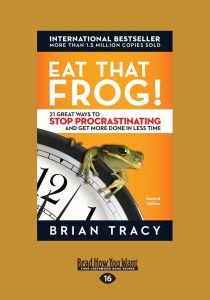
I love how you described willpower as essentially fighting with yourself. I’ve learned that willpower is a finite resource and then dwindles as the day wanes on. If you just get the big uncomfortable to-do out of the way at the beginning of the day—Eating that Frog as Brian Tracy would say—early on while you still have maximum willpower, then you’re going to have much more success versus saving it for the end of the day. Also, avoid having things that are going to cost you willpower like the cookie jar out, if you are trying not to eat cookies, just throw the cookies out so that they are not even in the house anymore so you are not squandering precious willpower on stupid things, and then you have it to use on working on that new book.
I have to respectfully disagree. I know you don’t expect this, but I’m just being…
This is a fun conversation. The whole point of this is that I want different perspectives.
I love turning over apple cards. Unfortunately, in the world of psychology, self-help, and productivity, there’s a lot of misinformation. One of them is this idea of ego depletion, which is kind of what you describe, not exactly but very similar to what you described, this idea that willpower is a finite resource. There was a psychologist by the name Roy Baumeister who really coined this term ego depletion which says that basically, willpower is like a gas tank that we use up over time.
This is something that is very commonly quoted and understood. It turns out the studies don’t replicate that. When other psychologists try to replicate these studies where he did these experiments, where he gave someone a math test, and then he supposedly drained their ego and drained their willpower, and then saw what kind of decisions they would make. It turns out, according to Baumeister’s experiment, that will power was depleted just like a gas tank.
Not only did his study not replicate, the researchers who reran these studies, one of the studies by Baumeister did that was probably the most famous was that he claimed when participants felt that their willpower was low, that they had depleted their willpower, and if you gave them sugar-sweetened lemonade, now their willpower was restored. The idea was that maybe it’s because the brain uses a lot of energy and the sugar and glucose replenished willpower. Turns out, that’s not true. Totally bogus. It can’t be replicated, at least in the studies that have been conducted so far. Except for one group of people.
All human behavior is a desire to escape discomforts; it’s called the homeostatic response. Share on XThere was one group of people who somehow magically restored their willpower after it had been depleted and those people were the people who believed that willpower was a limited resource. If you were the kind of person that thought that this was nonsense, that willpower does not get depleted, that you’re just tired, you need a break, or you can fight through it and keep working on the things that you enjoy doing, then your ego did not become depleted. Your willpower did not become depleted. Only if you believe it was true did you suffer from this willpower depletion problem which brings me to this part of Indistractable where I talk about how important it is to be careful about the label we put on ourselves, that we have to reimagine our temperament?
Particularly when it comes to these technologies and one of these phrases that we toss around in terms of how technology is hijacking our brains, I’m sure a term you’ve heard about a lot, addicted. These technologies are addicting us and our kids. We’re all addicted. It turns out that what we do when we label things this way is that we make them true as per the study around ego depletion. That when we believe we are spent, we are. When we believe that technology is addicting us and there’s nothing we can’t do, it’s hijacking our brain, it becomes true. It’s called learned helplessness.
The idea is that ego depletion is not true, it’s a myth. That willpower doesn’t get depleted and the lesson to take away here is that we have to be very careful about how we talk to ourselves. That willpower is not a tank, it’s an emotion. Just as we wouldn’t say, “Oh, I ran out of happiness. I ran out of sadness. I ran out of fear.” That’s not the way emotions work. You don’t run out of those things. They pass. When you are feeling down, when your willpower feels like it’s low. When you are tired, we have to look at it not as a trait, we have to look at it as a passing phase. To find ways to help us cope with that until we can do something healthier.
What I used to do when my willpower is depleted, I come home after a long day of work and I would sit with a pint of Ben & Jerry’s and watch Netflix. Why? Because I’ve had a bad day. I worked really hard. Now, my willpower is all gone so I can indulge. That turns out to be very counterproductive and harmful.
This is a paradigm shift, right here.
I’m glad.
I love that. I’m all about being careful about how we label ourselves because we do make it true, whether it’s empowering or disempowering thought or characteristic that we’re assigning to ourselves. But to think of willpower as an emotion or emotional state that we can either be in or not, and we can jump right back into it just like we can jump back into being happy or sad, I think is very powerful.
There is, of course, a residue. Just like if you are happy, and you hear some bad news, it takes you a little bit to adjust. Similarly, if you’re sad and somebody tells you a joke, you don’t laugh quite as hard if you’re feeling good. There is a residue and that is what we are confusing with ego depletion. But to recognize, for ourselves, that this is just a passing feeling, not a resource, that’s when it’s dangerous. When we say, “There’s nothing we can do. I’m spent.” That’s when it becomes self-defeating.
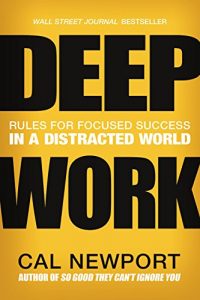
Speaking of residue, there’s something called Attention Residue. I learned that from reading the book Deep Work with Cal Newport, the author. By the way, Cal is fantastic. I had him on this podcast and we had such a great conversation. Listeners definitely check out that episode.
He was kind enough to blurb Indistractable, so that was very kind of him as well.
He endorsed it. I was happy to have him on board. So, tell our listeners, if you could, a bit about Attention Residue from your perspective.
This idea of Attention Residue is that when we’re engaged in one task and we become distracted, we are taken off task, it takes us some time to recover so to speak. To get back on task. This is really indicative of anytime we break concentration. If you’re playing chess, then you answer emails for a minute, it takes you a little while to get back in the game so to speak. The opposite is also true. If you’re working on writing a paper, a presentation, or doing something that requires a lot of concentration, then you get a ping, a ding, or ring on your phone. That’s going to leave a residue when you come back to the task at hand.
This is one of the reasons that it’s so important to make time for traction. To have blocks in our day where we can do focus work. Where we can do the things that we plan to do as opposed to what the app makers, what our boss, or our kids want us to do to make time to be indistractable.
Speaking of the app makers, what are they doing to try and hijack our attention because it’s kind of insidious what they’re up to. These attention engineers, it’s almost like they’re Las Vegas casino engineers trying to figure out how to get us to stay in the casino all hours of the night, warping time and everything and then we end up spending way more money than we can possibly afford. What are they up to that we are not aware of as just general consumers?
This is a little bit where I think I disagree with folks like Cal who paint a very sinister picture of these app companies. Look, I wrote the book Hooked exactly about how to do this but I see it as a positive as opposed to some sinister tactic. The fact is products want to be engaging. This podcast wants to be interesting. Well, you’re using variable rewards. You’re using a lot of the same techniques to persuade people to keep listening and there’s nothing wrong with it. It’s beautiful. It’s providing a great service to people and in exchange, they are giving you their attention. There’s nothing necessarily wrong with that.
What’s wrong with it is the opportunity cost. The cost of spending too much time doing one thing is that it comes at the expense of doing something else. Spending time with your family, work, spending time praying, meditating, anything you could be doing instead is the cost. It’s not that these technologies are melting our brains or hijacking our attention per se. Again, back to how we talk about these things and how we think about our self-image, if we think they are hijacking our brains and they are addictive, it becomes so. We don’t want to get into that territory.
With that being said, these products do deploy a whole host of different techniques to be entertaining, to be good. Frankly, we want that to some degree. We want our Netflix account to have interesting movies. Are we going to tell Netflix, “Hey, please stop making really good movies because I want to watch them a lot?” No. Of course not. That’s not a problem, that’s progress. It’s not going away. We don’t want it to go away; we like these products. Where there’s harm when we overdo it. But the fact is, these companies aren’t going to make the products less engaging. If you hold your breath waiting for the geniuses in Washington to regulate these companies so that their products aren’t engaging. If you hold your breath, you’re going to suffocate. It ain’t going to happen.
Instead of waiting for someone else to fix the problem for us, I think we can deal with this one on our own. Unless someone is pathologically addicted which is a disease, a pathology which turns out to be about 1%-5% of the population of children. I think children do require special protection, but when it comes to the rest of us, it’s a really personal responsibility issue. This is where it comes down to why I call being indistractable the skill of the century. Particularly for our kids, I think it’s super important that we teach kids how to manage distraction because if you think the world is distracting now, just wait a few years. Technology is going to continue to be more pervasive and more persuasive. That is not going away. What can change is the fact that we can learn tactics to make sure that we get the best of these technologies without letting them get the best of us.
You can't call something a distraction unless you know what it distracted you from. Share on XWhat would you recommend parents do, as far as their children, to keep them off, not give them an iPhone or an iPad until they are 13 years old or maybe older? What sort of things will be good parenting from your point of view?
One common sense of rule is what you’re alluding to. It’s very difficult for me to justify why anyone under 13 needs a social media account. In fact, the companies tell you that the age minimum is 13. Why would you let your kid use a product that the manufacturer said, “Don’t let them use until they’re 13.” That to me is silly. You say, “Well, the peer pressure and they need it and their friends.” So what? What’s going to happen if you don’t give them their social media account? Nothing. That’s just common sense.
The big takeaway of Indistractable is to look for the root causes. I think in our society, we have adopted this victimization mentality. It’s everywhere. Everyone is a victim and part of the latest trend in victimization culture is that these companies are doing it to us. “My kid is addicted because these gaming companies are addicting them. I can’t stop using social media because it’s the company doing it to me.” Well, if we try and look for the root cause, we find that there is something else going on. Particularly when it comes to children, this is a really important issue because the problem with blaming these things, the problem of not getting to the root cause and just sticking with the surface simple level analysis, is that we don’t actually get to the real source of the problem. The real source of the problem, particularly when it comes to kids is that they are missing out on what’s called psychological nutrients.
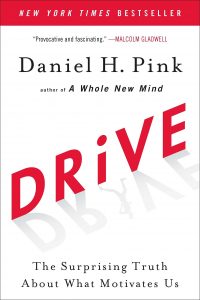
There’s a well-known theory in psychology community related to motivation that’s called Self-Determination Theory. If you read Dan Pink’s Drive, his book is based on the work of Deci and Ryan. These two geniuses, in my opinion, came up with Self-Determination Theory which states that, “All human beings need three things to thrive: they need competency, they need autonomy, and they need a sense of relatedness.” What happens when we blame technology for doing this to our children and think of the solution is to throw away their iPhone and bash their Xboxes with a baseball bat is that we ignore what’s really going on. The fact is that our kids are in crisis today, that they have an extreme shortage in this psychological nutrients’ competency, autonomy, and relatedness.
Partially, there are many reasons and factors for it but we need to start looking at technology overuse as the symptom, not the disease. The technology, it’s called the Needs Displacement Hypothesis that when kids aren’t getting these psychological nutrients in the real world, they look for them online. That’s exactly what’s happening. As the rise of standardized testing, as the decline of play in America, kids are so hyper scheduled, they’re not allowed to be outside. Their parents are scared to death to let their kids have any autonomy and freedom. The result of that is what else are they going to do? Well, they go online.
That’s the real source of the problem. It’s a good chunk of the book that I wrote about how to raise an indistractable child by understanding the deeper reasons. Of course, there are some surface-level things, common sense, suggestions that we talked about earlier on when to give your kids certain devices. But the real important thing is to dive deeper into what’s really going on.
By the way, the same thing goes for the workplace that when we think about distraction at work, there’s always something else going on. If you work at a place where people are constantly connected, they never disconnect, they are getting burned out, it’s not the technology. The technology is the tool. It’s the symptoms. What’s really going on is what’s called the lack of psychological safety. Where people can talk about these problems. Where people can find customized solutions.
In my research, what I found is that there’s actually no correlation between companies that use these technologies and overuse these technologies. In fact, many companies in Silicon Valley, one company I profiled, Slack, doesn’t have a problem with overusing technology even though they make the tools that many people complain that is constantly keeping them tethered to the workplace because, at a place like Slack, employees have the psychological safety to find solutions to tech overuse. They can raise their hand and say, “You know what? I don’t like checking email at [9:30] every night. That’s not working for me. How can we find better ways to deal with this?” On the walls of Slack headquarters, it says in big pink letters, “Work hard and go home.” It’s part of the company culture to respect people’s time. That’s what needs to change because technology itself, I promise you, that ain’t going away.
Wow. I just love the insights that you shared. It was so powerful, and I really do hope that everybody listening goes out and grabs a copy of your Indistractable book and applies it in their workplace, at their home with their family, with their kids. We’ll all be better off because of it so thank you so much.
My pleasure. Thank you. I appreciate it very much.
What’s your website for folks to learn more about the books, about what you do, and read some of your articles.
Absolutely. The website is nirandfar.com. It’s a little tricky, so Nir is spelled like my first name. Nir, spelled N-I-R. It’s nirandfar.com. If you go to nirandfar.com/indistractable or if you just type in Indistractable into Google, you will get it as well or go to indistractable.com. I have all these tools that you can use for free. You don’t even have to buy the book to get them. All these different tools that allow you to track distraction, to schedule your day, schedule your timebox. A lot of these techniques that you can use for yourself. Of course, you can check out the book on Amazon or wherever books are sold.
Amazing. Thank you so much, Nir. Catch you on the next episode, folks. Get Yourself Optimized. In the meantime, have a fantastic week.
Links and Resources
- Nir Eyal
- Facebook – Nir Eyal
- Twitter – Nir Eyal
- Instagram – Nir Eyal
- LinkedIn – Nir Eyal
- Hooked
- Indistractable
- Eating that Frog
- Deep Work
- Drive
- Cal Newport – previous episode
- Stanford Graduate School of Business
- Hasso Plattner Institute of Design
- MIT Technology Review
- Aristotle
- Socrates
- YouTube

